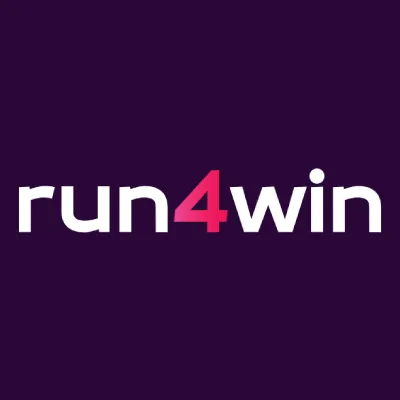
What Is Hedera Crypto? The Best Wallets to Store Your HBAR
Hedera crypto has found a place in the market where the adoption of blockchain and cryptocurrency are increasing. With the increase in the use of HBAR, the crypto of Hedera, you should know the best wallet to store your digital wallet.
Bitcoin introduced the concept of decentralized currency, and Ethereum expanded it with smart contracts. However, they have their own limitation, which has introduced a new generation of digital infrastructure. These platforms are offering not just innovation but true transformation.
Hedera Hashgraph is a next-generation distributed ledger technology (DLT) that promises blazing-fast speeds, near-instant transaction finality, unmatched security, and an eco-conscious footprint. If you think HBAR might be just another blockchain, you are a little off, as it is not a blockchain at all. It is a revolutionary data structure that takes decentralization to a whole new level.
In this blog, we will learn about one of the emerging platforms, Hedera and how to use it safely.
What is Hedera Hashgraph (HBAR)?
Hedera Hashgraph is a decentralized platform that uses a Directed Acyclic Graph or (DAG) technology known as Hashgraph. This system was invented by Dr. Leemon Baird and has gained significant adoption in decentralized finance (DeFi).
The use of DAG means HBAR does not use blockchain structure to record transactions. So, it is different from the popular cryptocurrencies in the market, such as Bitcoin, Ethereum, and other Altcoin options.
Overall, this design and concept of cryptocurrency eliminates the need for miners and reduces energy consumption significantly. Hashgraph allows transactions to be processed in parallel rather than sequentially. As a result, Hedera can achieve the following:
-
More than 10,000 transactions per second (TPS).
-
Transaction finality takes between 3 and 5 seconds.
-
Minimal fees, which can be as low as $0.0001 per transaction.
-
Bank-level security with asynchronous Byzantine Fault Tolerance (aBFT).
These benefits have become disruptive in the crypto world and have made it an ideal option for business and enterprise adoption as a decentralized apps (dApps) option, all of which are without the bottlenecks of traditional blockchains. After a quick Hedera crypto overview, let us move on to some of the major Hedera use cases.
What Is HBAR Used For?
HBAR, the native token of the Hedera network, serves several key purposes. Here are some of the reasons why HBAR is one of the mainstream digital asset options.
-
Transaction Fees: HBAR is used to pay for smart contracts, token transfers, file storage, etc.
-
Network Security: Stakers of HBAR play an essential role in protecting the network by securing it from illegal activities. As a result, it is being used as one the best options in t~~he~~ market.
-
HBAR Staking Rewards: The planned feature of Staking Rewards, which might be available very soon, enables HBAR holders to generate rewards by becoming part of the staking process.
-
Hedera Governance Model: Future versions of the governance system may experience expanding community involvement, although council members currently administer governance. This will be provided on this platform.
Read More: Understanding SEI Blockchain Technology: Features To Know
The Best Wallets to Store Your HBAR
There are many crypto wallets available on the market that can be used to store HBAR. However, choosing the right wallet depends on how you plan to use your HBAR. For instance, it can be used for daily transactions or staking. That said, you might be planning to use the wallet for long-term holding or interacting with dApps.
So, based on the need for the use of these crypto assets, here are the six most secure and popular wallets currently trusted by the HBAR community. Based on the HBAR wallet comparison, you can choose your own storage alternative.
HashPack
The first and arguably the best option to store your HBAR is HashPack. HashPack is the officially recommended wallet by the Hedera community. First, it offers both browser extensions and mobile wallets that are built specifically for the Hedera ecosystem. Likewise, it enables one of the fastest crypto transactions. It provides all of these while being user-friendly and regularly updated by active developers.
There are several reasons why this wallet is one of the ideal options in the market. So, let us cover some of the key features that have helped it become the top wallet for HBAR.
Key Features
-
Easy Navigation.
-
Simple account creation process for Hedera accounts.
-
Integrated support for Non Fungible Tokens (NFTs) and Hedera Token Service Tokens.
-
Built-in dApp browser.
-
Availability for Social logins, including Google, Apple, and Discord.
-
Ledger integration for added hardware-level security.
-
Enables HBAR staking support.
Pros
-
It has a clean UI and is beginner-friendly.
-
Active development and support, meaning increasing features and integrations.
-
Free wallet option and easy to set up.
-
Built-in swap feature.
Cons
-
Only supports Hedera-based assets, which limits the use.
-
Being a hot wallet, it operates online as a result, it is more vulnerable.
Best for: Beginner-to-intermediate users, dApp interaction, staking
Ledger Nano X / Nano S Plus
Ledger is one of the best cold wallet alternatives for storing and using the HBAR. This hardware-based wallet stores your private keys offline. People mostly use this wallet as it offers the best protection.
It is ideal for investors who want to hold their HBAR long-term without touching it regularly. Moreover, when paired with HashPack, Ledger provides enterprise-grade protection. The result? It is emerging as a great crypto storage for digital assets.
Key Features
-
As a cold wallet, it offers an additional layer of crypto protection.
-
Availability of Secure Element chi,p which is known as a military-grade security.
-
Supports both Bluetooth and USB use.
-
100+ crypto asset support, including HBAR
-
It offers a pairing option with hot wallets like HashPack for Hedera use.
Pros
-
Known for the highest level of security for HBAR.
-
It can store multiple cryptos, including Hedera crypto.
-
Resistant to hacks and malware attacks.
-
It requires physical confirmation for transactions, making it safer.
Cons
-
The initial cost can be high compared to other options in the market. It can cost around $79–$149.
-
Difficulty in learning to use, especially for new users.
-
Must be paired with HashPack for full Hedera features.
Best for: Long-term holders, maximum security, large portfolios
Blade Wallet
Blade Wallet is another great integration wallet option. It is specifically designed for Hedera, with a strong focus on mobile experience and NFT functionality. Although it offers both web and mobile versions, the mobile version has a much better experience. Moreover, its lightweight nature makes it ideal for casual users.
Key Features
-
Designed and developed for Hedera.
-
Native NFT support.
-
Offers Secure PIN and biometric login.
-
Availability of Built-in swap and buy features.
-
Strategic Partnership with Mastercard called BladePay.
Pros
-
Offers fast and lightweight use and operation.
-
Enables simple and sleek interface.
-
Active NFT integration.
-
Ideal for mobile-first users.
Cons
-
It is still in the developing stage, which means it offers fewer features than popular wallets like HashPack.
-
Not yet compatible with Ledger.
Best for: Mobile users and NFT collectors.
Atomic Wallet
Atomic wallet might be the best wallet for you if you want a wallet that lets you store HBAR but do not want to be limited to the Hedera crypto. Yes, Atomic wallets let you store and use HBAR alongside other popular coins like BTC, ETH, ADA, and SOL. It’s a non-custodial wallet, a type of Blockchain wallet that lets you be your own bank.
Key Features
-
Supports 300+ assets other than HBAR.
-
Staking options are available, but HBAR staking is not yet supported in the platform.
-
Private keys are stored locally, which gives an additional layer of protection.
-
Enables cross-platform use in Windows, Mac, Linux, Android, and iOS.
Pros
-
It is a great wallet for diversified crypto users.
-
Simple setup and easy navigation.
-
Private key control for additional security.
-
No third-party custodians means users have full control over their funds and on the associated private key.
Cons
-
Not tailored for Hedera features like NFTs.
-
Less dApp integration.
-
Recent concerns over transparency and security.
Best for: Users managing multiple cryptocurrencies.
Guarda Wallet
Next on the list, we have Guarda Wallet. This hot wallet offers web, desktop, and mobile apps with support for HBAR and many other cryptocurrencies. It’s ideal for users who need versatility without sacrificing control over their private keys. Moreover, its adoption is increasing, thanks to ledger compatibility. Here are some key features of this storage alternative.
Key Features
-
Cross-platform support across web, desktop, and mobile apps.
-
Ledger compatibility.
-
Enables backup and recovery support.
-
HBAR token management.
Pros
-
User owns private keys, which increases the security of the crypto assets.
-
Accessible on all major platforms, which gives an increased use opportunity.
-
One of the best HBAR desktop wallets.
-
Ledger integration.
-
Responsive customer support.
Cons
-
Less Hedera-specific feature support might make it less popular for those seeking an HBAR-specific wallet.
-
The interface may feel outdated.
Best for: Cross-platform users who want flexibility
Walla Wallet
Last but definitely not the least, we have Walla Wallet. Walla Wallet is a mobile wallet developed to support the Hedera ecosystem. While it’s not as polished as HashPack or Blade, it offers simplicity and speed for users focused mainly on HBAR transactions.
Key Features
-
Enables direct HBAR transfers.
-
Simple design and easy to use.
-
Hedera token support.
-
Biometric access.
Pros
-
Quick and easy crypto transfers
-
Designed for Hedera
-
Lightweight HBAR wallet as compared to most wallets available in the market.
Cons
-
Fewer features.
-
Limited updates and integrations.
Best for: Early HBAR community members and quick transactions
Read More: Non-KYC vs. KYC Crypto Exchanges: Which Is Better?
Why You Need to Store HBAR Safely
HBAR is one of the emerging crypto options. This means that although it has one of the best security features, there are many vulnerabilities which can put your assets at risk. So, let us cover why you need to store HBAR safely.
The Double-Edged Sword of Decentralization
Self-custody, or having control over your money rather than a bank or outside agency, is one of the fundamental tenets of cryptocurrencies. However, as the saying goes, with great power comes great responsibility. There is no support desk or "forgot password" button to save you if you make a mistake during a transaction, lose your wallet password, or are phished.
The Risks of Poor Storage
Neglectful safety measures when storing HBAR result in substantial financial losses. First and foremost, phishing attacks represent a major security threat since attackers use false wallet applications and website duplicates to steal private keys and seed phrases from users.
Another major concern is hacking. Hot wallets remain at high risk for cybercriminals who search for wallet software bugs and user actions they can exploit because these wallets are always connected to the internet. The silent activity of malware keyloggers enables them to capture keystrokes, which results in the theft of sensitive information, including passwords and seed phrases.
Despite using hardware wallets with their excellent security features, you remain at risk of losing your funds due to the physical loss or damage of the wallet. To ensure the safety of this wallet, they must be properly stored to prevent damage as well as theft or destruction.
Hot vs. Cold Storage: What’s the Difference?
One must understand hot and cold storage distinctions before choosing an HBAR wallet.
Hot Wallets
Digital wallets, known as hot wallets, function online while connected to the internet. The main options for HBAR wallet storage consist of mobile applications, extensions for browsers and software-based wallets.
The main benefit of these wallets arises from their easy accessibility, which makes them suitable for quick transactions and dApp interactions. Whoever uses hot wallets must deal with a serious disadvantage because these wallets face greater risks of cyber threats, including hacking attempts and malware and phishing attacks, while remaining connected to the internet.
Cold Wallets
The storage methods known as cold wallets exist offline since they involve either hardware wallets or paper wallets. The lack of internet connection on cold wallets creates a solid defense against cyber attacks. Complete long-term storage of HBAR, along with substantial holdings, can be achieved by using cold wallets.
The trade-off, however, is convenience. Users experience higher difficulty when conducting transactions with cold wallets since they must connect their devices to hot wallet interfaces for execution. The preference for security in HBAR operations pushes users toward selecting cold storage methods, especially for substantial holdings of the currency.
How to Choose the Best Wallet for Your HBAR
Here’s a breakdown to help you choose the wallet that best fits your usage:
| Use Case | Recommended Wallet |
|---|---|
| Long-term holding | Ledger Nano + HashPack |
| Daily transactions | HashPack or Blade |
| NFT collector | Blade Wallet |
| Beginner/new to crypto | HashPack |
| Managing multiple cryptos | Atomic or Guarda |
| Mobile-first users | Blade or Walla Wallet |
This can help you understand your needs and choose the best option for yourself.
HBAR Storage Best Practices
There are many hot and cold wallet options. You can choose anyone based on your needs and use case. However, regardless of which wallet you use. How? Let’s learn.
Here are a few security tips to protect your assets:
-
Back Up Your Seed Phrase: Write it down on paper and store it in a fireproof safe. Note: Do not store the wallet information in a phone as a screenshot.
-
Use Two-Factor Authentication (2FA): Use 2FA, especially on wallets or exchanges tied to emails or mobile numbers.
-
Avoid Public Wi-Fi: Never access wallets on unsecured networks like public Wi-Fi. Try to avoid hotspot use as well if it is possible.
-
Keep Software Up to Date: Update wallets and firmware regularly to prevent vulnerabilities, as these updates come with bug patches and increased safety measures.
-
Watch Out for Phishing Sites: Bookmark official wallet URLS and don't click on links from emails or DMS.
-
Consider a Hardware Wallet, especially if your portfolio grows beyond a few hundred dollars and you don't need to access the portfolio frequently.
HBAR Wallet Setup Guide
Here is a simple and step-by-step guide for HBAR wallet Setup.
-
Step 1 (Download Wallet): Start by visiting HashPack.app and installing the browser extension or mobile app.
-
Step 2 (Create Wallet): After the download of the wallet of your choice is complete, launch the app, click “Create New Wallet,” and choose a login method (Google, Apple, email, etc.).
-
Step 3 (Backup Phrase): The next step is for your financial asset safety. Securely write down your 12/24-word recovery phrase and store it offline; never share it.
-
Step 4 (Fund Wallet): After that, copy your HBAR wallet address and send HBAR to it from an exchange like Binance or KuCoin.
-
Step 5 (Explore Features): Finally, use your wallet to send/receive HBAR, stake tokens, access dApps, and manage NFTs
Conclusion
As the adoption and use of digital assets continue to increase, Hedera Hashgraph technology stands out as a cutting-edge alternative to traditional blockchains, offering speed, efficiency, and security through its unique DAG-based architecture. With its increasing adoption in enterprise solutions and growing community interest, safeguarding your HBAR assets has never been more important.
From the high-security cold storage of Ledger to the beginner-friendly interface of HashPack, each wallet offers unique advantages based on your usage needs. Always prioritize safe storage practices, back up your seed phrase, enable two-factor authentication, and stay alert to phishing threats.
By combining the power of Hedera with the right storage solution, you can take full advantage of HBAR’s potential while keeping your assets secure in this fast-paced digital world.
Frequently Asked Questions (FAQs)
- Where to buy Hedera?
The alternatives to obtain HBAR tokens include Binance, Coinbase, OKX, KuCoin and Uphold.
- What is the best HBAR mobile wallet?
Users consider HashPack to be the top mobile solution for HBAR storage due to its exceptional security measures and wide array of features.
- Is Hedera (HBAR) a good investment in 2025?
Most investors choose to invest in Hedera with confidence because it presents promising business partnerships and an innovative hashgraph consensus. Investors need to perform individual fact-checking and talk to professionals who specialize in financial planning.
- Can I store HBAR in hardware wallets like Ledger or Trezor?
Yes, HBAR is supported by Ledger Nano S and X through third-party apps like HashPack.







